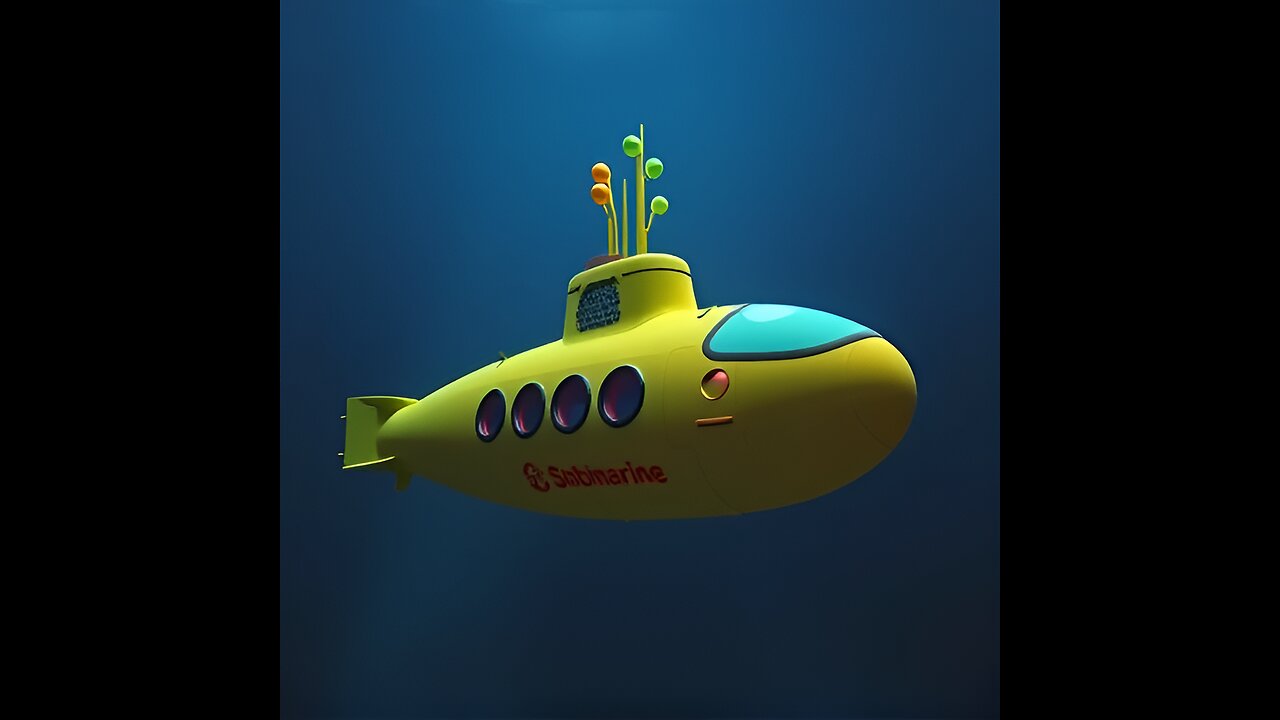Premium Only Content

The sinking of Nuclear Submarines all over the world kills marine life by Marko Vovk Books on Amazon
LINK https://amzn.to/3APNw9O
Nuclear Extinction Event Is Killing Our Families: From Manhattan to Meltdown: Exposing the Radioactive Legacy
BOOK LINK https://amzn.to/3APNw9O
Nuclear submarines emerged as naval warfare machines in the 1950s with the launch of the USS Nautilus, which introduced enriched uranium reactor technology. The US took the lead, building 245 nuclear submarines by the 1990s. Russia joined the race in 1958 with the K-3 Leninskiy Komsomol. Today, the US has 66+ active-duty atomic submarines, and Russia has 30.
The development of atomic submarine capabilities by the UK, France, China, and India, alongside the US and Russia, has created a global issue. The proliferation of these vessels has necessitated international treaties and agreements to regulate their use and disposal, highlighting the interconnectedness of our world in addressing this environmental threat.
Since 1950, hundreds of these nuclear dinosaurs have been manufactured and put into our oceans. In some international agreements, Russia decommissioned 200 atomic submarines, the US 100, and France 25. Decommissioning involves removing the nuclear fuel and other hazardous materials and dismantling the reactor and other components. Russia dismantled 100, France 11. The US lost two submarines at sea, France 7. Washington Hanford nuclear graveyard houses ten additional old submarines for future decommissioning.
The Cold War mishaps sunken submarines all over the world are now rusting, leaking, and killing our oceans. The USS Thresher sub sank in 1963, claiming 129 lives. The USS Scorpion followed in 1968, with 99 lost. Russia's losses include K-8 in 1970 and K-278 Komsomolets in 1989. The Kursk tragedy in 2000 took 118 lives. These underwater tombs are active environmental hazards, leaking radioactive materials into the ocean and contributing to the deterioration of marine ecosystems, along with rotting human bodies.
Decommissioned vessels face different fates on land—the Hanford Site in Washington stores 144 submarine reactor compartments along collapsing tunnels full of train cars full of radioactive waste. Russia's Kara Sea graveyard holds 14 reactors and a crippled submarine. These sites are substantial superfund graveyards. This term describes sites contaminated with hazardous substances that create havoc on human health, plant life, and our planet.
The long-term consequences of sunken submarines leaking radiation into our oceans are grave. The K-278 Komsomolets, for instance, show radiation levels 800,000 times higher than usual in some areas. The recent case of K-159, which sank in 2003 and will continue to leak and be radioactive for millenniums, underscores the enduring impact of this issue.
Russia identified only six sunk submarines, and many more exist in the Arctic oceans. These vessels contain Radioactive isotopes like cesium-137 and strontium-90 and have 30-year half-lives. Today, models predict increased cesium levels in cod and other marine foods we consume. When our media shows us skinny, starving polar bears, are they emaciated polar bears with leukemia?
Many submarines carried nuclear propulsion systems and nuclear weapons during the Cold War. Several of these submarines sank. The Soviet submarine K-278 Komsomolets sank in 1989. It had two nuclear warhead-armed torpedoes. The USS Scorpion, an American submarine, was lost in 1968. It carried nuclear-tipped Mark 45 torpedoes. These sunken submarines pose environmental risks. They could leak radioactive materials into the ocean. The Soviet K-219 and K-129 submarines also carried nuclear armaments when lost at sea.
These sunken submarines continue to pose potential environmental hazards due to the risk of radioactive leakage from both their nuclear reactors and weapons. The Komsomolets wreck, for instance, is still monitored for possible contamination. The presence of nuclear materials in these sunken vessels has complicated salvage efforts and raised long-term concerns about the impact on marine ecosystems. Nuclear submarines utilize pressurized water reactors (PWRs) for propulsion, employing enriched uranium as fuel. These reactors heat water in a closed primary loop, transferring energy to a secondary loop to generate steam for turbines. The main fissile isotope, uranium-235, has a half-life of about 704 million years, ensuring long-term power generation for the submarine. However, this also means the radioactive waste produced will remain hazardous for a long time.
When a nuclear submarine sinks and when the reactor containment breaks, radioactive material leaks into the ocean. This will happen 100% before the 704 million half-life, causing genetic mutations and health issues to affect populations worldwide.
These nuclear-powered vessels pose potential environmental and health risks, particularly when they are decommissioned or if they sink. The consequences could be severe in the event of war or other disasters that could cause these ships to sink,
-
 3:14:33
3:14:33
Joe Donuts Gaming
5 hours ago🟢 Live : Christmas is Here!! | Fortnite, Caroling, Light Tours and Donos !!
17K7 -
 LIVE
LIVE
CLUJ
4 hours agoCHRISTMAS EVENING HYPE!! LETS HAVE FUN GAMING!!
734 watching -
![I AM FINALLY BACK :: PUBG: BATTLEGROUNDS :: RUMBLE NOW HAS GIFTED SUBS!!! [Merry Christmas] {18+}](https://1a-1791.com/video/fwe1/22/s8/1/e/f/C/6/efC6v.0kob-small-I-AM-FINALLY-BACK-PUBG-BATT.jpg) LIVE
LIVE
a12cat34dog
6 hours agoI AM FINALLY BACK :: PUBG: BATTLEGROUNDS :: RUMBLE NOW HAS GIFTED SUBS!!! [Merry Christmas] {18+}
136 watching -
 3:55:42
3:55:42
STARM1X16
5 hours agoMerry Christmas Fortnite
22.7K3 -
 2:45:33
2:45:33
Sgtfinesse
5 hours agoMerry Christmas Night
30.5K15 -
 LIVE
LIVE
tacetmort3m
22 hours ago🔴 LIVE - (MERRY CHRISTMAS) TIME TO SPREAD DEMOCRACY - HELLDIVERS 2 OMENS OF TYRANNY
71 watching -
 12:42
12:42
Cooking with Gruel
20 hours agoBrown Butter Trifle with Salted Caramel and Cinnamon Apple
10.1K3 -
 2:46
2:46
BIG NEM
9 hours agoDiscovering RAKIJA: The Holy Liquer of the Balkans
8.05K2 -
 1:11:38
1:11:38
Film Threat
14 hours agoCHRISTMAS DAY CHILL STREAM WITH CHRIS GORE | Hollywood on the Rocks
134K27 -
 14:22:40
14:22:40
The Quartering
1 day agoYule Log Christmas MAGA Edition With Memes! Come Hang Out!
221K29